Tidal marsh restoration underway on Fairhaven side of New Bedford Harbor coastline
By scooping out and removing the sediment that originally filled what was left of the salt marsh, heavy equipment operators are helping to restore the marshland.
Many years ago, the drivers behind the wheel were filling it in.
Buzzards Bay Coalition Restoration Ecologist Sara Quintal said efforts are underway to restore the tidal marsh on 11 acres of land on the peninsula at the end of River Avenue behind Breakwater Marinas in Fairhaven are part of an effort to begin to restore the resources that were damaged over decades.
“From the 1800s up through the 1900s, it’s estimated that we lost almost 140 acres of salt marsh along the Acushnet River,” she said. “A tremendous amount of salt marsh was filled in for industry to be able to build the wharves and the textile factories.”
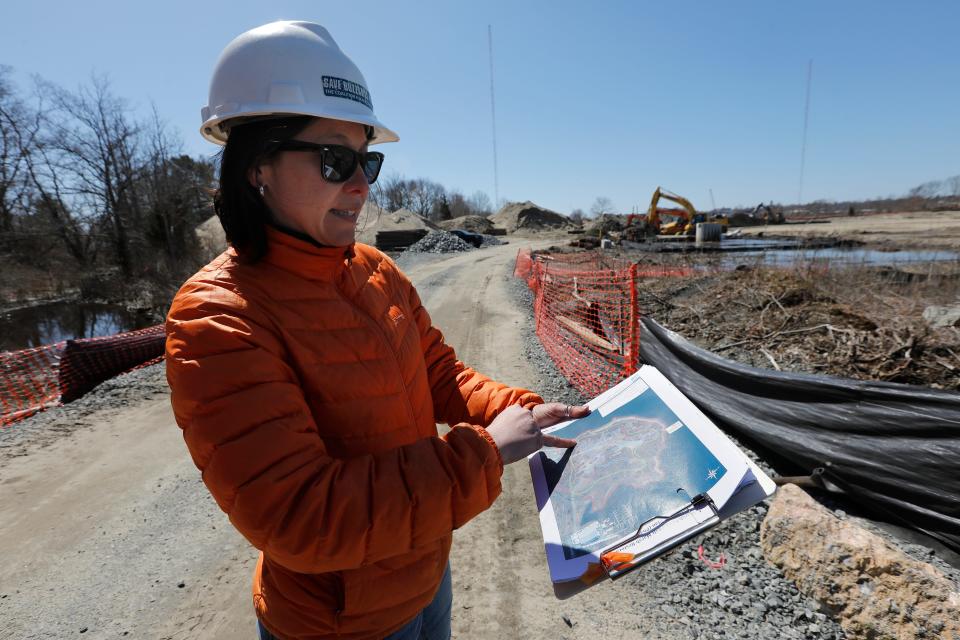
A salt marsh is a buffer, a sponge, a purification system and a nursery ground for fish, and because it serves so many purposes, she said it’s significant to have lost so much saltmarsh in the river system.
It’s exciting, she said, to be part of the team working to bring back a significant amount of that salt marsh.
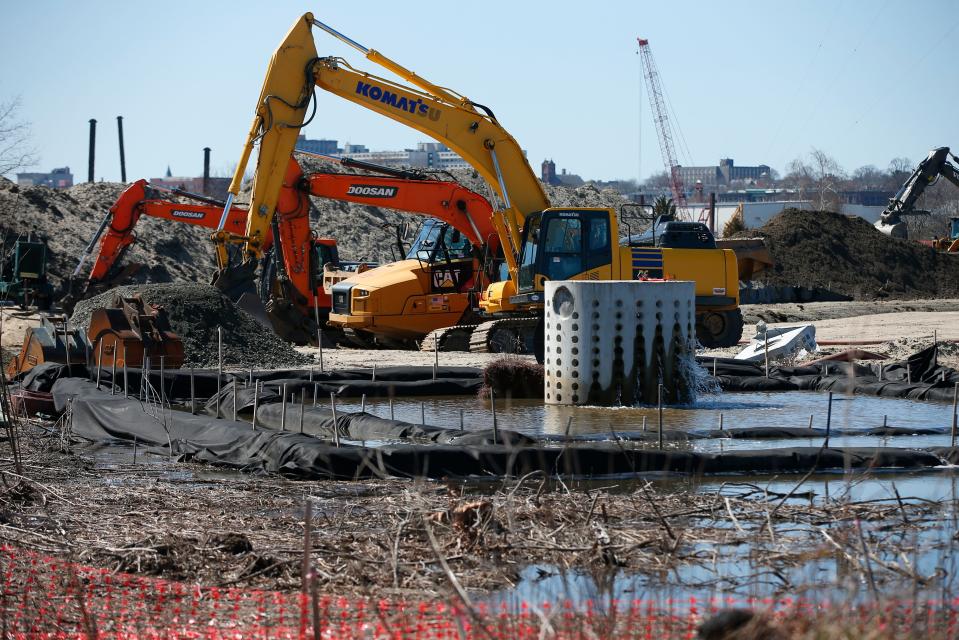
A walkway to enjoy nature
Imagine walking the perimeter of a restored saltmarsh watching the shore birds while pushing a baby stroller.
The site will be open to the public. A walkway has been constructed around the perimeter of the site for walkers, bird watchers and other visitors, and there will be handicap-accessible and stroller-accessible trailhead parking at the end of Taber Street.
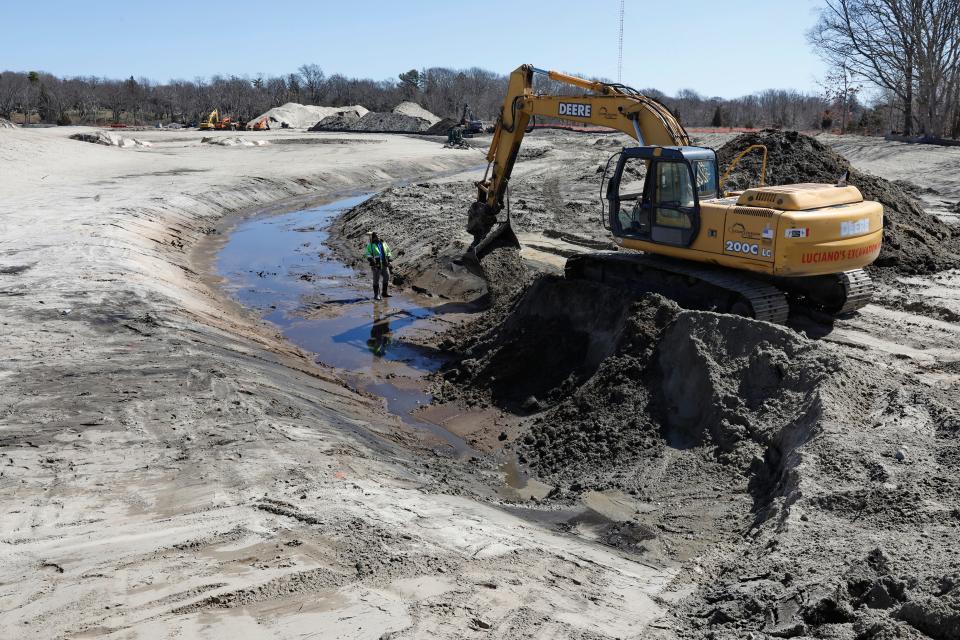
A marsh island will be created as a safe haven for birds that like to build their nests close to the marsh surface but whose habitats have been flooded.
"That's going to help them persevere in their attempts to lay successful nests that get don't flooded out by these ever-increasing storm tides and higher sea levels," she said.
The conservation property is being constructed in two phases on a peninsula of land overlooking New Bedford Harbor with the first phase expected to wrap up this year.
Funding secured for restoration
The New Bedford Harbor Trustee Council has provided approximately $4.6 million in funding for this project with a $2 million match from the National Fish and Wildlife Foundation.
The project partners are the Buzzards Bay Coalition together with the NOAA Restoration Center, the Massachusetts Division of Ecological Restoration and the Fairhaven-Acushnet Land Preservation Trust.
The Coalition is managing the entire project, including the south side of the project, which it owns, and the Preservation Trust which owns the north side of the site. Quintal said the Coalition assists the project partners with managing the day-to-day operations.
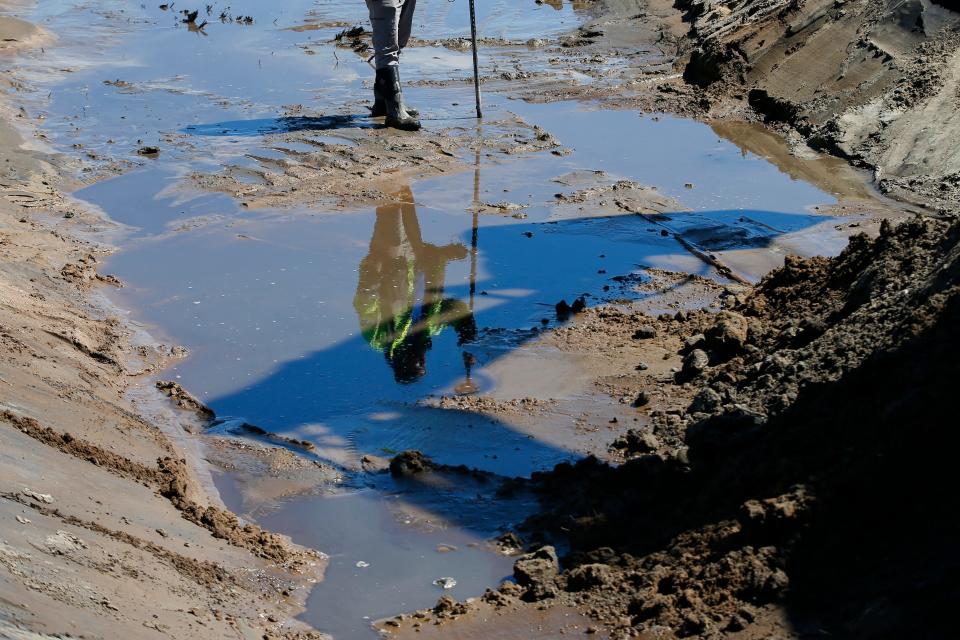
While there is progress on the north side, the overall project is impeded by efforts to have the two active radio towers on the south side removed so that work can begin. That effort has been ongoing for some time due to changes in ownership of the towers.
Quintal said it's unclear when construction of the second phase can begin.
Repopulating the marshland
The process of repopulating the salt marsh will be sped up by planting it, starting with about six acres as part of the first phase sometime in April. The connection with the harbor will open up and after the tide has cycled through and the site has settled, they will plant about 60,000 marsh plugs.
While the plugs are grown in New Jersey, some of those plugs are locally sourced seed, and they are also getting a local genotype of a particularly drought tolerant marsh plant that likes to grow at the upper edge of the marsh and the lower edge of the sand dune.
“The design overall is really focused on coastal resiliency and forward thinking so we want to give this marsh that we are reconstructing as long of a timeline as possible,” she said. “We acknowledge that sea level rise is happening – we certainly can see it among many of our sites throughout Buzzards Bay – so we wanted to ensure that the marsh that we’re designing here was going to keep up with that sea level rise in such a way that we’re going to have saltmarsh for the longevity of the site.”
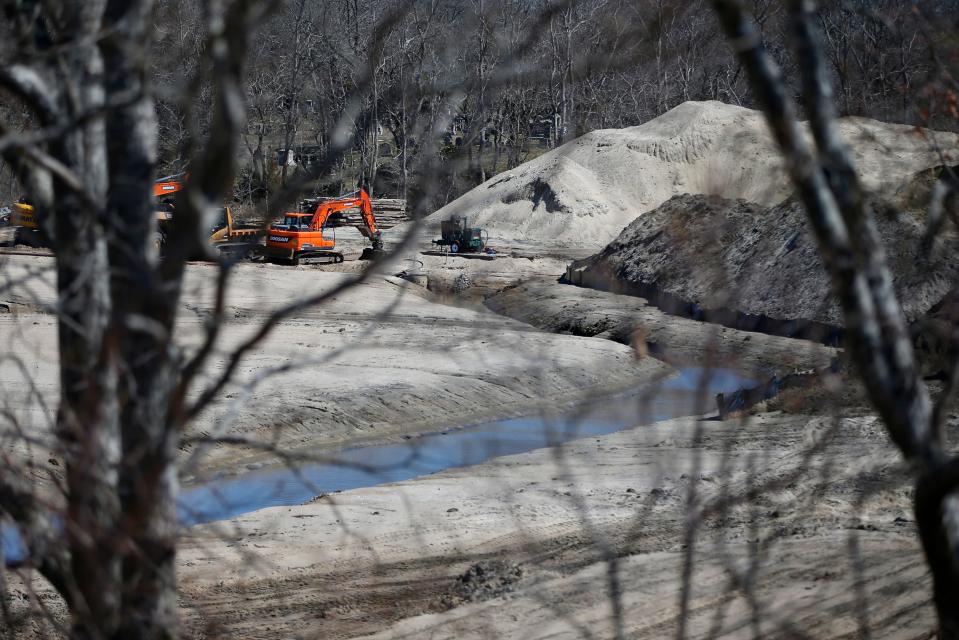
She said with very little coastal sandplain habitat remaining, another benefit of the project is revitalization of an upland habitat that works well next to the marsh because of the sandy soils.
“We’re bringing back a really, really precious habitat in an estuary river, and we’re bringing back rare habitat that there’s less and less of over time, so this will be a tremendous resource for a multitude of wildlife species and plant species,” she said.
The history of the site
Overall, Quintal said, the project is about taking back the natural resources that were damaged on site going back to the 1930s, and looking further back, to the 1800s when the granite on site was quarried.
“When the city was getting ready to dredge New Bedford Harbor in the late 1930s, they needed a place to put material and this site was very opportunely located, and they decided it was a great spot,” she said.
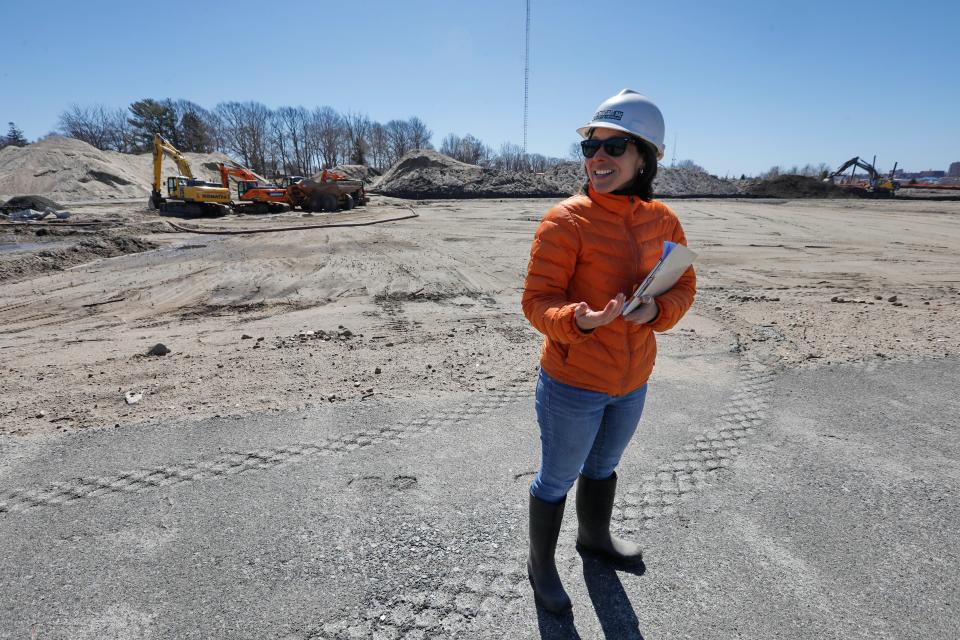
With an agreement between New Bedford and Fairhaven in place, the former quarry was filled with mostly sandy material from the harbor from the late 1930s to the early 1950. Quintal said what was visible looked like a sandy beach for a very long time.
Eventually the site was left with some marsh, some granite outcrop and apparently a deep pool, she said. Some of the exposed granite rocks will remain on site, a relic of sorts left over from the granite quarry operations.
Standard-Times staff writer Kathryn Gallerani can be reached at kgallerani@gannett.com. Follow her on Twitter: @kgallreporter. Support local journalism by purchasing a digital or print subscription to The Standard-Times today.
This article originally appeared on Standard-Times: Buzzards Bay Coalition leads the way with tidal bay restoration

